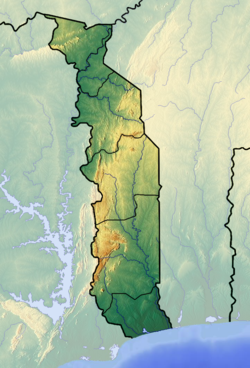

The geology of Togo is largely of gneisses and granitic rocks of Proterozoic age in the central and southern part of the country. These are overlain in the coastal zone by Cretaceous and Cenozoic sediments. The northern part of Togo has a basement of Neoproterozoic metamorphic rocks and Paleoproterozoic granite. [1] The south of the country is covered in sedimentary basins, covering 3,300 km2 of land. The West African Craton is made up of crystalline structures, ranging in age from the Neoarchean to the Paleoproterozoic age. The North-Dapaong zone, which is located in the West African Craton, migmatites, gneisses, amphibolites, granodiorites and granites are commonly found. The Neoproterozoic Volta Basin contains sedimentary formations on the Birimian bedrocks. These sedimentary formations are divided into two groups: an intra-tillite group and a supra-tillite group. [2]
